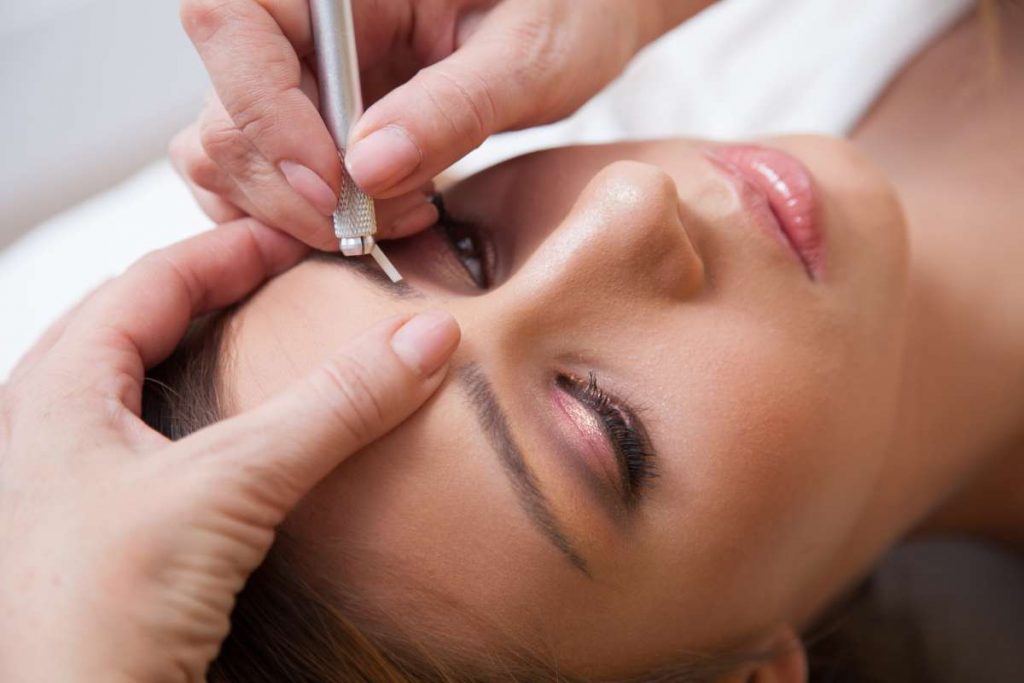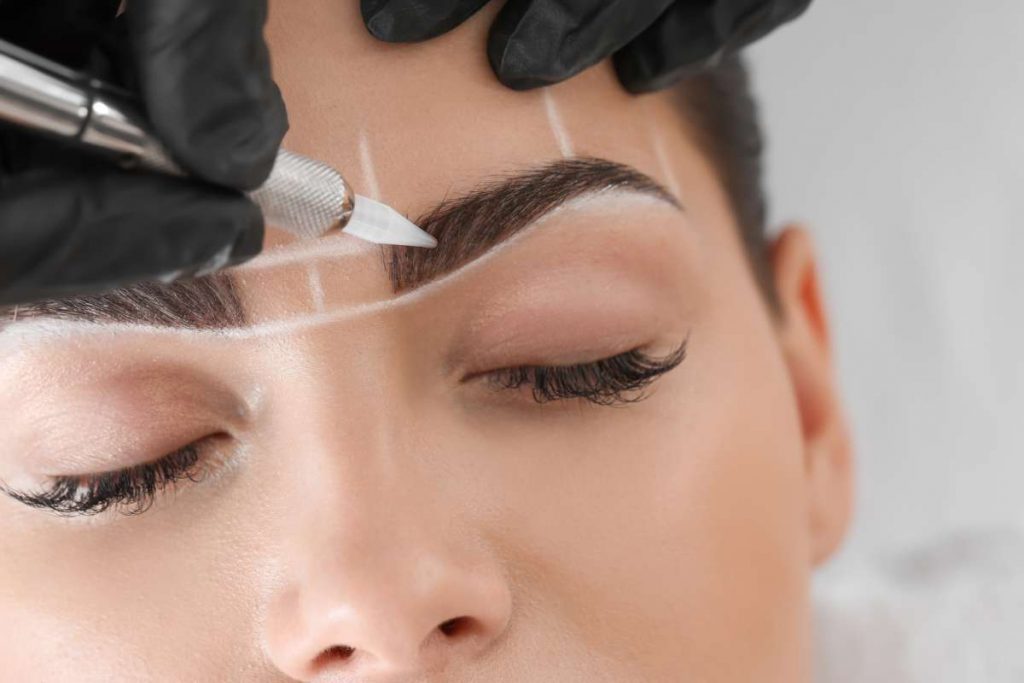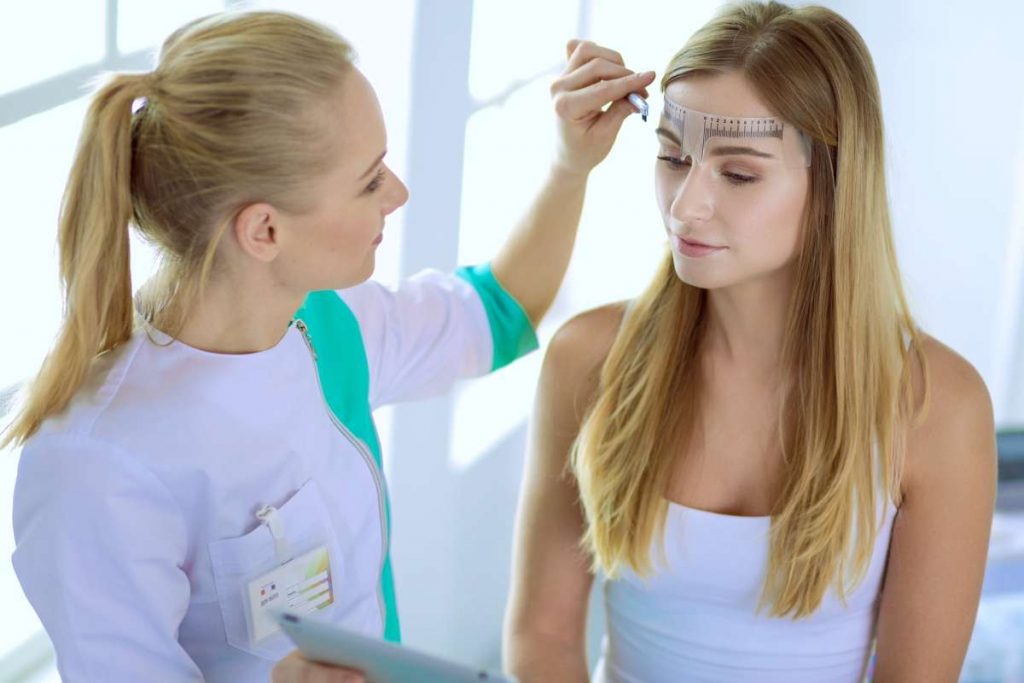Are you considering getting your makeup put in a way that won't wash off? It's possible that you despise the everyday process of applying eyeliner because you either aren't able to do so with the same level of precision as you'd want, or you despise the ongoing struggle of attempting to get the ideal cat-eye shape. No matter the motivation for your search, you might discover the answer in permanent eyeliner.
We talked to professionals in the industry to learn everything there is to know about the procedure, including how long it takes and, perhaps more importantly, how long the effects of the procedure last. The word "permanent" causes hesitation for a great number of people. This can be the most beneficial component of the surgery, but it also has the potential to be the most detrimental.
What Is The Process Of Permanent Makeup?
Permanent makeup, also known as micropigmentation, is achieved by tattooing the skin using a pen that contains iron oxide. This gives the impression that powder has been applied to the face. A cosmetic tattoo can simulate eyeliner or lipstick, or it can darken and give the appearance of fuller eyebrows. It can also produce the appearance of thicker eyebrows. In addition to that, it can help disguise scars and even out the appearance of an uneven hairline.

What Are The Risks?
There are a number of reasons to be wary, most notably if you are on Accutane. According to Falco, the process of preparing for the application of permanent or semi-permanent makeup is "essentially the same as preparing for any other tattoo," with the exception of the inks and procedures used.
According to him, because it is a body tattoo in its own right, it is subject to the same risks and should be avoided in the same ways. "We encourage [customers] to cease taking any blood thinners for less than a week prior as a precaution, which includes things like fish oils, aspirin, Advil, and some vitamins," he said. "This is to reduce any potential bleeding, which generally does not occur."
Meyer recommended that if you intend to have any Botox or other injections in the eye area, you should get those procedures done before having eyeliner put. He stated that this is the best way to ensure that the results of these procedures will be optimal. You also need to make an assurance that you are completely recovered at least two weeks before the appointment that you have planned to have your liner applied. According to Falco, you may not be an ideal candidate for the procedure if you are nursing a baby, pregnant, have diabetes, or suffer from any of a number of other major disorders that impair your immune system and ability to heal.
According to Meyer, before you go forwards with the application of permanent or semi-permanent cosmetics, it is a good idea to speak to your doctor about it, especially if you are currently on medicine for an existing condition. According to Tai, if you've been using Accutane (or any other retinoid) for the past six months, you won't be able to get permanent or semi-permanent makeup applied until after you've stopped taking the medicine. (Some people believe that Accutane, which is the brand name for the drug isotretinoin, prevents wounds from healing properly. On the other hand, this may not always be the case.)
When working with needles of any kind, there is always the possibility of contracting an infection. This is especially the case when using needles that have not been sterilised. "The body has the potential to respond to the various ink particles, which can result in the formation of inflammatory tissue areas. Tattooing can cause keloid scars in predisposed people.
It's also possible for people to have an allergic reaction to the ink used in their tattoos, whether it be a specific colour or formulation. "If you have already reacted, it may be difficult to treat. It is possible to avoid this by conducting a patch test behind the ear to determine whether or not there will be a reaction "Dr. Khetarpal explains. Other potential consequences include crusting, bleeding, loss of eyelashes, ectropion, serious eyelid damage, and sweling which is when the eyelid is turned away from the eyeball.
According to the Food and Drug Administration of the United States, pigments have the potential to disrupt the results of cranial MRI scans by degrading the image quality. In extremely rare cases, MRI scans can cause the skin around a tattoo to enlarge or burn. Tattooing your eyelids is FREAKING CLOSE to your eyeballs, so it would be much difficult to ignore the pain than when I was getting my eyebrows microbladed, when I could just lay back and try to zen out.

What About Pain?
Before the actual surgery, the area will have a numbing lotion given to it, according to everyone we talked to about it. According to Meyer, once the benefits of the cream begin to take effect, the entire process should, in theory, be relatively painless. On the other hand, considering that everyone has a unique threshold for pain, it is possible that the treatment will just be mildly unpleasant for some individuals. Ant Falco added that some people might find it tolerable, while others might find it unbearable, even with a numbing lotion.
To provide a point of reference, Meyer shared that she has had conversations with customers who claimed the eyeliner process they underwent was more uncomfortable than microblading. Nevertheless, she also mentioned that they have never had any customers who needed to stop in the middle of an application because the discomfort was too much. How long does it continue to work? And if you despise it, do you think it will ever go away completely?
According to Meyer, the "tattooed" eyeliner would normally persist for around a year, but Ant Falco mentioned that it may last for two or three years. Nevertheless, the pigment will lose its intensity with time. According to Meyer, a large number of her customers return to receive touch-ups after around one year has passed. If you change your mind about wearing eyeliner at some point in the future, it may be feasible for it to disappear completely within one to three years. Because the pigment is absorbed by the skin in a manner that is unique to each individual, it is difficult to estimate
What Matters Should Youth Think About?
Although the promise of permanent makeup might be enticing, you should carefully consider whether or not you want to get it done. This is necessary if you are a younger person because some features of the face, such as the eyes, eyebrows, and lips, change as we get older. "Even in the world of beauty, fads come and go. The trend of having full lips and thick eyebrows may be seen everywhere on social media right now, but this might not be the case in five or ten years "Dr. Khetarpal warns. Because less is more, you should always begin with a minimalistic approach if you want to look natural.
She goes on to say that it is difficult to recreate the natural appearance of hair in the eyebrows with tattoo ink. Since eyeliner is undoubtedly the form of permanent makeup that causes the least discomfort and is the least obvious, if I make my experience sound suspiciously easy, it's because it actually was. If I had gone in to get my eyebrows or lips done, there would have been a big increase in the amount of scabbing, and the healing process would have taken significantly longer.
Conclusion
Permanent makeup, which is sometimes referred to as micropigmentation, can be produced by tattooing the skin with a pen that contains iron oxide. This process is also known as micropigmentation. A cosmetic tattoo can be used to mimic eyeliner or lipstick, or it can darken and give the appearance of bigger eyebrows. Cosmetic tattoos are also used to create the appearance of fuller lips. There are many reasons to be cautious, the most important of which is the fact that you are now on Accutane. It's possible that you're not the best choice for permanent eyeliner if you're nursing a baby, pregnant, or dealing with any other kind of medical condition. If you have been taking Accutane for six months, you won't be able to get it applied until you have finished your course of treatment with the medication.
Ant Falco Meyer, who specialises in applying eyeliner, claims that she has never been forced to pause in the middle of an application due to discomfort. A topical anaesthetic lotion will be applied to the eyelid area, which will numb it and make the procedure significantly less uncomfortable. Meyer claims that the "tattooed" eyeliner has a potential lifespan of between two and three years. The possibility of having eyeliner that lasts a lifetime may sound appealing to you, but before you decide to get it done, you should give it a lot of thought. If at some point in the future you decide that you no longer want to use eyeliner, it is possible that it will be totally gone within one to three years. This will depend on how long you have been wearing it.
Frequently Asked Questions About Eyeliner Tattoo
Full healing is complete within less that 6 weeks. After that, your final color and shape can be assessed and touched up if necessary. Following the procedure, you can expect any of the following: mild to moderate swelling, redness, bruising and bloodshot eyes.
Risks of Eyeliner Tattoo, If your eyeliner tattoo is done by an expert, it is a very safe – and usually pain-free – procedure. However, despite the difference in inks and techniques, the application of eyeliner tattoo is basically the same as a traditional tattoo, so the same risks do apply.
Avoid long, hot showers for the first 10 days. Avoid sleeping on your face for the first 10 days. Avoid face-down swimming, lakes, and hot tubs for the first 10 days, Avoid topical makeup and sunscreen on the area.
But the process does involve a tattoo machine pushing ink into your delicate eyelid skin, so it's not going to feel like nothing. That said, most places use a topical numbing cream to keep you comfortable during the process, and you can also call ahead to ask about the typical pain level of costumers.
During your initial healing stage, you should avoid scratching and touching the treated area, exposure to moisture, and letting any unnecessary products or irritants near your eyes. This can include creams, saline eye drops, lash serums, and eye makeup.

